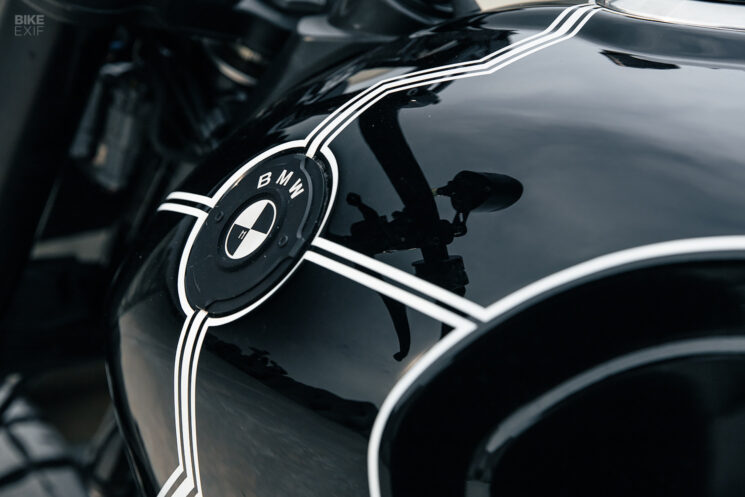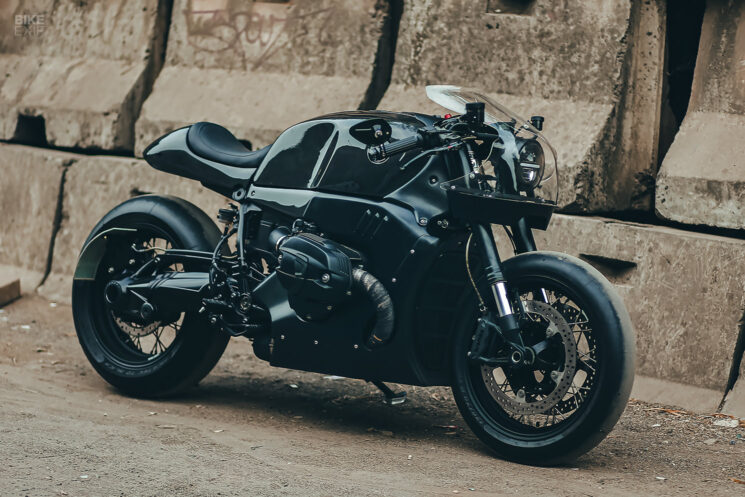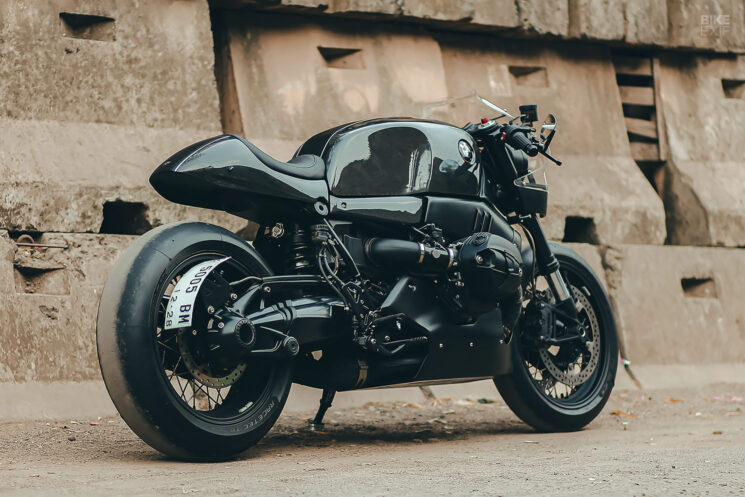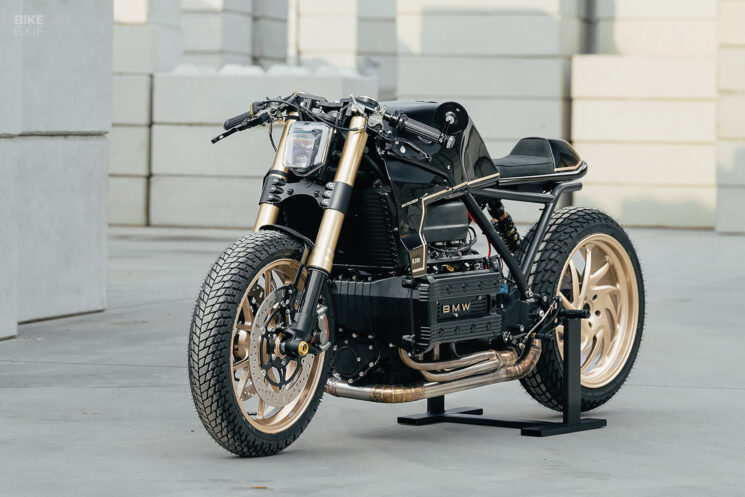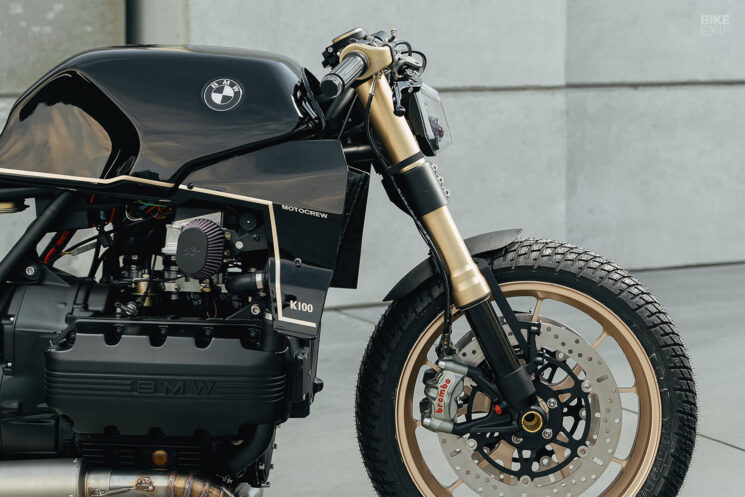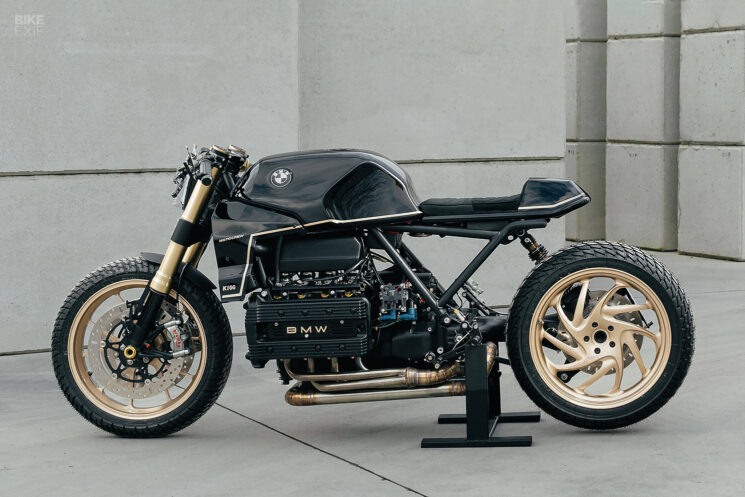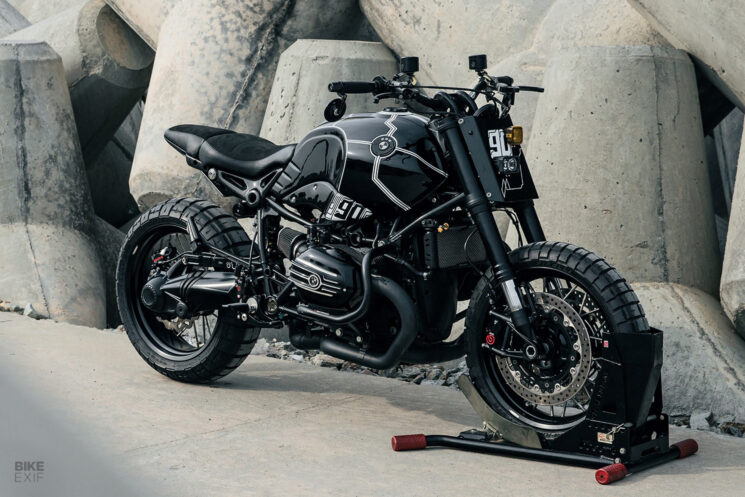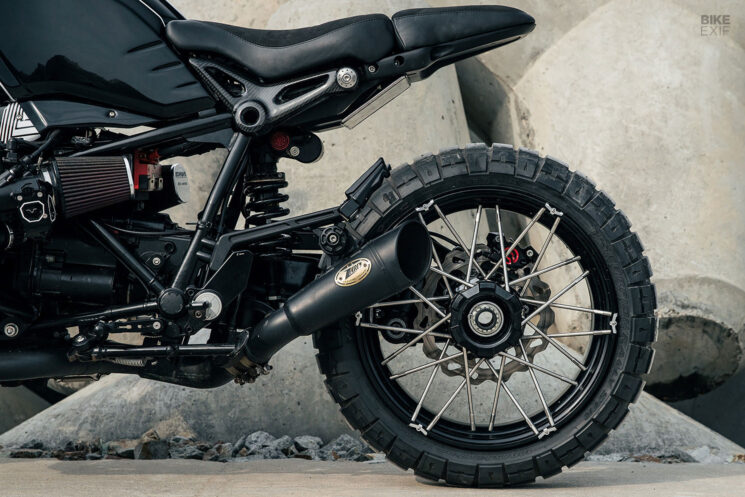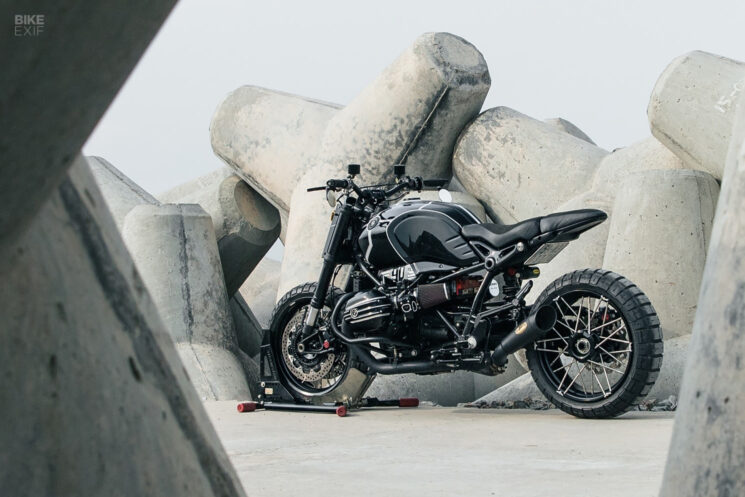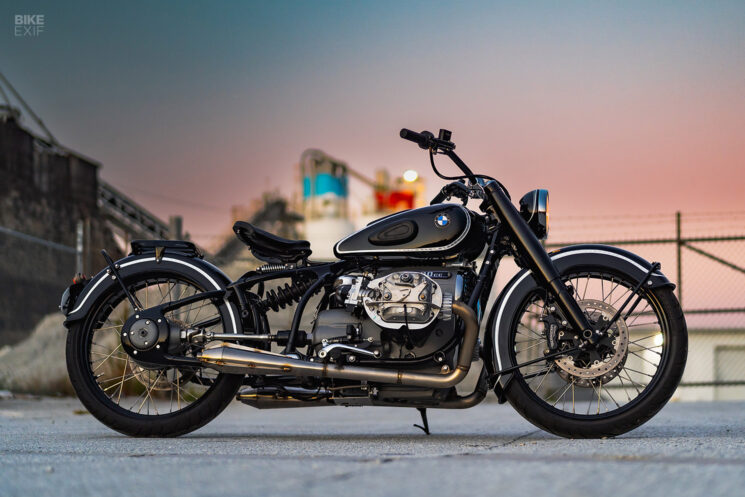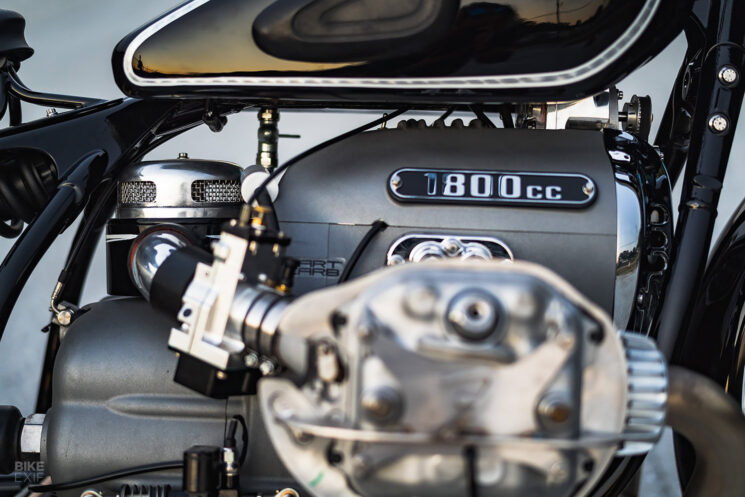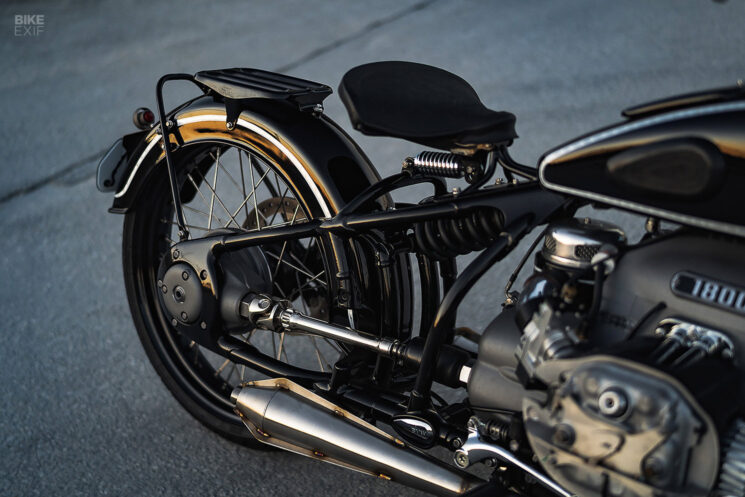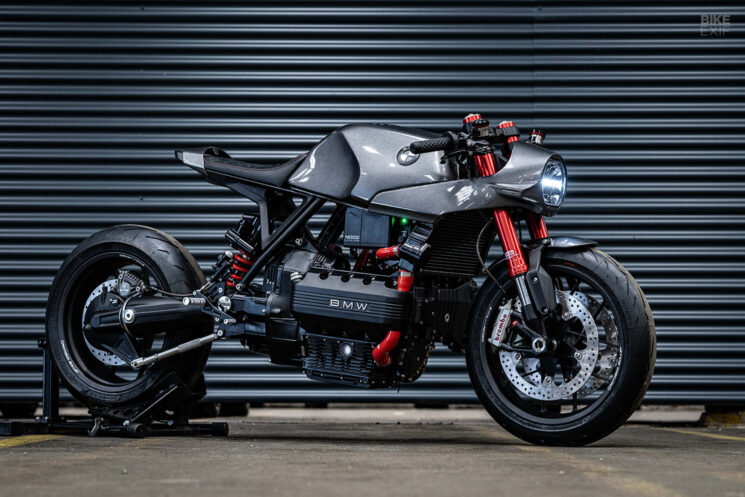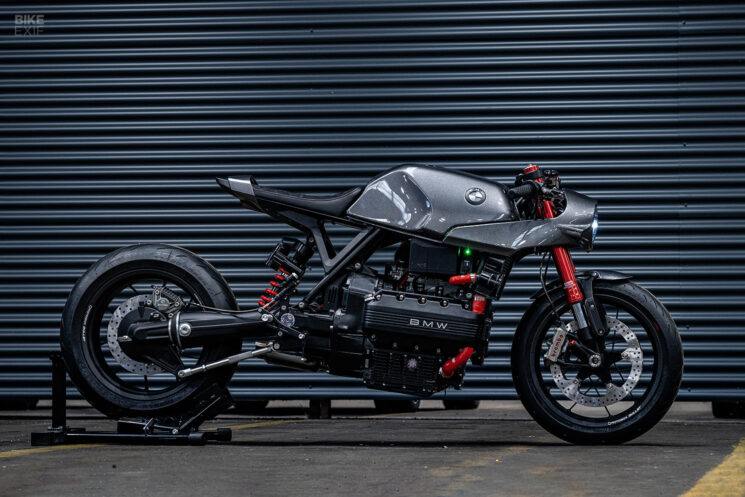![]()
I know, I know. I promised you wiring in this installment, and it’s been so long since you’ve seen anything about our Honda CB550 street tracker project that you forgot where we even left off. I could make some excuses, tell you I’ve been busy, but how about we skip all that and get to the point?
While wiring is certainly the next big hurdle standing between us and riding off into the sunset, there was a boatload of fabrication and homework that needed to be done first. We needed to find homes for our electronics, affix our number plate and generally make a bunch of things actually function, and that needed to happen before I started worrying about running wires.
As a happy little accident, that lets us dedicate the next installment to wiring, and wiring alone (hopefully sooner than later).
Pandora’s Number Plate Our Honda CB550 is simpler than most in the electrical department, but we still needed to finalize some things before we built the wiring harness. The process started with a thorough read of motogadget’s installation instructions for the mo.unit blue (the backbone of our new electrical system) to understand what original electrical components we’d be keeping and where they’ll live. We’ll get into that more next time. The big things we were still missing include a headlight, taillight and indicators, and they’d all prove to be more complicated than a nut-and-bolt affair.
We’d worked an LED off-road light into our front number plate, but it wasn’t mounted to the plate, and the plate wasn’t mounted to the bike. I had ideas, but that all changed when I realized we’d need to house a good bit of the electrical behind the number plate. So the number plate needs to mount the headlight, house the mo.unit and, ideally, be adjustable so the headlight can be aimed. Oh, and our new motoscope tiny speedometer needs to fit in somewhere as well. No problem, right?
Our solution to this puzzle sounds complex, but it all works quite well. We built standoffs for the number plate off the triple clamps, with the bottom being a hinge and the top incorporating a riv-nut for adjusting the plate/headlight. A weather-tight box for electronics uses these same mounting points, and the hinge allows easy servicing of the mo.unit. We’ll probably toss some leather washers in during final assembly to quell any rattling.
To finish things off, we fabbed a standoff for the LED headlight to correct its angle further, and bent up an aluminum mount for our motoscope tiny speedometer.
![]()
Remaining Legalities Like the front end, the tail of our Honda CB550 tracker project was missing some street-legal equipment. Lowbrow Customs had sent us a universal license plate mount and taillight assembly, and motogadget supplied us with their microscopic mo.blaze tens indicators. Now they just needed to find their forever homes.
I initially hoped the license plate mount could work behind our new Tuffside Street Tracker seat, but there’s just no space for it between the tail and the wheel. We opted for the swingarm instead and got to work with a few tabs and some steel round bar. While it was originally designed to mount on a fender, our new bracket expertly adapts the license plate mount to the swingarm, maintaining the brake light and plate illumination.
Next were mo.blaze indicators. You could place these tiny blinkers wherever and they’d work, but I didn’t want it to look like an afterthought. The Honda had holes on both sides of the back frame horns, but they stuck too far down and positioned the blinkers out in space. So we axed them with the angle grinder, eliminating the unsightly chunks of steel protruding from the tail. With the frame capped on both sides, we grabbed a couple tabs from our stash and tucked the blinkers in tight.
![]()
Front End Odds and Ends The front end of our Honda CB550 has made huge strides, with a brand new front wheel, a suspension overhaul and our shortened steel fender, but a few important items remained. The factory speedometer drive would no longer be used since we’re swapping to a motogadget speedometer, and omitting it required whipping up new axle spacers.
Next, we needed to account for the new wheel speed sender that came with our motogadget motoscope tiny. The process is as simple as mounting the sender on a bracket and ensuring it’s inline with a magnet mounted to the front wheel. I carved up a little chunk of scrap aluminum and utilized the bolts that secure the front fender and brake assembly. Polishing it probably wasn’t the best move, as it highlights every flaw in the metal, but it’s good enough for who it’s for.
The last piece of the puzzle was the front brake. Honda equipped the CB with a two-piece disc brake up front, and it’s actually a cool piece if you look past the chipped paint and corrosion. Since this project is all about making something from nothing, I wanted to see how much we could improve it without swiping the company card.
As you probably guessed, the brake rotor went straight to the drill press, and I kept it simple with an alternating pattern of countersunk 9/32” holes. I kept the pattern straight, hoping for a period-correct look. You can be the judge of that.
The last thing to do was media blast the rotor to even out the finish, and I sent the Tokico caliper through the blaster as well. With the front end reassembled, I really dig the way all the aluminum parts go together up front. It’s clean and reserved in my opinion, and fits the rugged character the bike has adopted.
![]()
Pegs—The Welder Makes One Size Fit All We had a rad set of Punisher XL foot pegs in stock courtesy of Biltwell—a major attitude adjustment compared to the rubber monstrosities our Honda was sporting from its past life. The issue is that Biltwell had Harleys in mind when they made these pegs, not Hondas, so they’re designed for a much different clevis.
Instead of turning down some goofy spacers and applying some tack weld stops to make the pegs sit right, I decided we could solve all our problems with the welder. We lopped off the frame side of our OE clevis and TIG-welded it to the peg side of the Biltwell clevis.
With that, we have factory-style peg fitment on the frame side without sacrificing the pivot adjustability Biltwell designed into these pegs. The finished product looks legit—who’d have guessed custom CB550 Punisher XL pegs could be that easy?
Center Stand Delete Sure, a center stand is great for propping your bike up nicely in the garage, but where this Honda is going, it’s nothing but dead weight and visual clutter. It’s a chunky, heavy piece—probably the most over-built part of this motorcycle. Thankfully, a spring and a couple of pinch bolts rectified that situation, and our Honda is several pounds lighter for it.
While I was at it, I made some gentle adjustments to the side stand as well. It had a little rubber foot added to it, which I assume adds a margin of safety and cushions the stand if you set the bike down quickly. Nice as that is, it’s been hitting the pipe for decades, so it had to go.
![]()
Pipes Again? Yeah, the pipes still were not finished. I spent an unreasonable amount of company resources hacking up these janky aftermarket exhausts to turn the megaphones into reverse cones. But I never actually affixed them to the bike.
Anyone who’s ever worked on a Honda knows there’s an obscene amount of hardware that mounts the pipes to the engine. There’s the finned flange with two nuts, two collars per pipe and a copper crush gasket—and now multiply that by four pipes. Since we were missing all of it, Partszilla made a killing off me.
![]()
With the pipes secured on the engine side, we needed to figure out frame mounting that was sturdy and serviceable. I initially wanted to use the old center stand mounts since they were tucked neatly out of sight, but that got complicated in a hurry.
In the spirit of getting it done and moving on, I opted for a pair of 1/4-20 riv-nuts in the frame and beefy tabs welded on the pipes. The tabs are more visible than I’d prefer them to be, but they don’t impede removal of the pipes, which is already complicated enough, so I’m happy with it.
![]()
So there you have it, a bunch of random tasks that finally get us where we need to be—ready to run wires. I won’t claim to be a master of anything, but I’ll be the first to say that wiring is my kryptonite. I suppose it’s an evil I can avoid no longer.
Bike EXIF thanks Motogadget, Tuffside, Bridgestone, Lowbrow Customs and Biltwell Inc. for supporting our Honda CB550F tracker build.
















